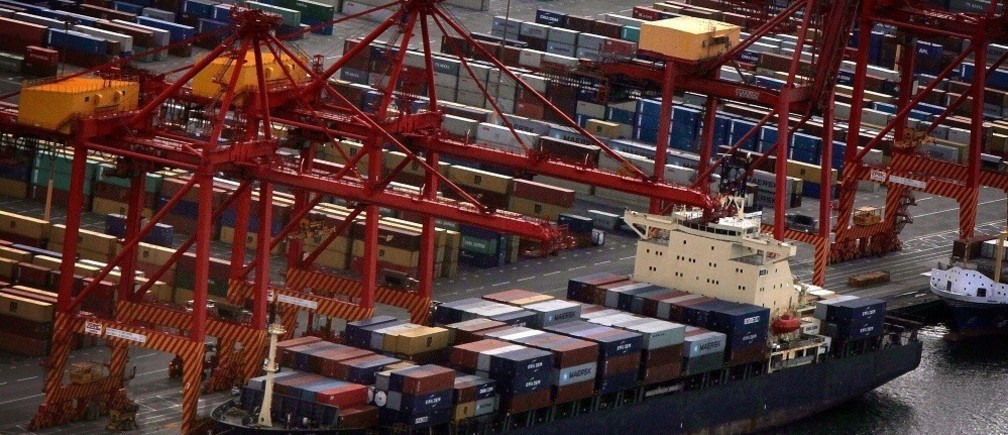What is the link between trade and consumption inequality?

Stay up to date:
Financial and Monetary Systems
This article is published in collaboration with VOX EU.
The debate in the US over the Trans-Pacific Partnership (TPP) trade agreement has largely cantered around the potential impacts on US workers. The current frontrunner of the Democratic Party, Hillary Clinton, recently declined to support the TPP in its current form. In her words: “As I have said many times, we need to be sure that new trade deals meet clear tests: They have to create good American jobs, raise wages…based on what I have seen, I don’t believe this agreement has met it.” Her position reflects widespread public opinion that the gains from trade, regardless of how large they may be in the aggregate, are not evenly shared across members of society. A poll conducted by Pew Research in 2014 found that only about 20% of Americans believed that trade created jobs and raised wages.
Inequality has of course grown considerably over the past several decades, and some recent studies have established a causal link between trade with low-income countries and wage inequality and job loss in the US (Autor et al 2013, Pierce and Schott 2012). Yet what is frequently lost in the public discussion is that trade affects the prices of consumption goods (e.g. the price of shoes, flash drives, etc.) and not just factor prices (e.g. wages). Since people with different levels of income consume these goods at different intensities, this means that trade will also have a distributional impact through an expenditure channel. For example, a trade-induced increase in the price of food has a stronger negative effect on low-income consumers, who typically have larger food expenditure shares than richer consumers.
New research
In new research (Fajgelbaum and Khandelwal 2015), we develop a framework to analyse how international trade affects individuals through this expenditure channel. A key strength of our approach is that it requires only publicly available trade and production data, and should therefore be viewed as complementary to recent papers exploring the expenditure channel using more detailed, but less readily available, micro data (e.g. Atkin et al 2015).
The approach embeds the Almost Ideal Demand System introduced by Deaton and Muellbauer (1980) into a standard model of international trade, the multi-sector Armington model. This allows us to derive a non-homothetic gravity equation. As in a standard gravity equation, it relates bilateral sector-level trade flows to trade frictions and measures of market size of importers and exporters. Additionally, it contains a term that captures the income elasticity of the good being exported and a measure of the importer’s income distribution. We estimate the income elasticity of the goods and services exported by different countries. For example, if we observe that, controlling for trade costs, Japanese clothing commands a larger share of imports in richer countries relative to Indian clothing, our framework implies that high-income consumers prefer Japanese to Indian clothing. Using the parameter estimates from the gravity equation and the general-equilibrium trade model, we can simulate the effects of trade on the welfare of consumers at different income levels.
Findings
Figure 1 shows the key finding. It plots the simulated gains from trade – the percentage of real income that would be lost in a counterfactual movement to autarky – across percentiles of the income distribution (subtracting the welfare change at the median individual of each country).
- We find a pro-poor bias of trade in every country.
- On average, the gains from opening to trade are 63% for the 10th percentile of the income distribution and 28% for the 90th percentile.
Figure 1. The gains from trade by income percentile

Why does liberalising from autarky benefit the poor relative to the rich? It is because poor consumers spend relatively more on sectors that are more traded, while high-income individuals consume relatively more services, which are among the least traded sectors. Consequently, in moving from autarky to trade, the relative prices of the goods consumed by the poor at higher intensities fall more.
What determines the strength in the pro-poor bias of trade?
The answer lies in the income elasticity of each country’s products vis-à-vis its trade partners. In countries that export relatively low income-elastic goods, such as India, the gains from trade are relatively less biased to poor consumers. In these countries, opening to trade increases the relative price of low-income elastic goods (which are exported), or decreases that of high-income elastic goods (which are imported).
Our framework can be used to simulate the effects of sector-specific shocks, as well. This is useful since trade agreements, like TPP, neither move countries away from autarky nor trigger an across-the-board reduction in tariff barriers. This is illustrated in Figure 2, which reports the cross-country average welfare change for each percentile of the income distribution (again, demeaned relative to the median individual) corresponding to a 5% trade cost reduction in food, manufacturing and service sectors, respectively. The shocks to food or manufacturing sectors favour the poor because these goods are typically negative income-elastic. However, in the case of reducing trade costs for service sectors we see a relative pro-rich bias because these sectors tend to have positive income elasticities. The key message is that to measure the unequal gains from trade through the expenditure channel, one needs to know how the consumption of the liberalising sector differs across individuals.
Figure 2. Welfare effect of a 5% trade cost reduction in food, manufacturing and services

It is important to stress that these results purposefully shut down trade’s effects on wages. The goal of the project is to demonstrate the importance of demand heterogeneity across consumers for the distributional effects of trade. However, understanding the overall consequences of trade on the entire distribution of individuals requires an approach that jointly integrates supply-side and demand-side heterogeneity. We leave this for future work.
References
Atkin, D., B. Faber, and M. Gonzalez-Navarro (2015). “Retail Globalisation and Household Welfare: Evidence from Mexico”, NBER Working Paper 21176.
Autor, D., D. Dorn and G. Hanson (2013). “The China Syndrome: Local Labor Market Effects of Import Competition in the US”, American Economic Review, 103(6): 2121-68.
Deaton, A. and J. Muellbauer (1980). “An Almost Ideal Demand System”, The American Economic Review, 70 (3), 312–326.
Fajgelbaum, P. and A. Khandelwal (forthcoming). “Measuring the Unequal Gains from Trade”,Quarterly Journal of Economics.
Pierce, J. and P. Schott (2012). “The Surprisingly Swift Decline of U.S. Manufacturing Employment”,NBER Working Paper 18655.
Publication does not imply endorsement of views by the World Economic Forum.
To keep up with the Agenda subscribe to our weekly newsletter.
Authors: Pablo Fajgelbaum is Assistant Professor of Economics at UCLA and Faculty Research Fellow at NBER. Amit Khandelwal is a Professor at Columbia Business School. His research focuses on the link between international trade and economic development.
Image: A ship is loaded with containers at Sydney’s Port Botany container terminal. REUTERS/David Gray.
Don't miss any update on this topic
Create a free account and access your personalized content collection with our latest publications and analyses.
License and Republishing
World Economic Forum articles may be republished in accordance with the Creative Commons Attribution-NonCommercial-NoDerivatives 4.0 International Public License, and in accordance with our Terms of Use.
The views expressed in this article are those of the author alone and not the World Economic Forum.
Related topics:
Forum Stories newsletter
Bringing you weekly curated insights and analysis on the global issues that matter.
More on Financial and Monetary SystemsSee all
Spencer Feingold
April 17, 2025
Lucia Fry and Naomi Nyamweya
April 17, 2025
Spencer Feingold
April 15, 2025
Hubert Keller and Maximilian Martin
April 15, 2025
Makaio Witte and Sourajit Aiyer
April 14, 2025
Tariq Bin Hendi
April 8, 2025





